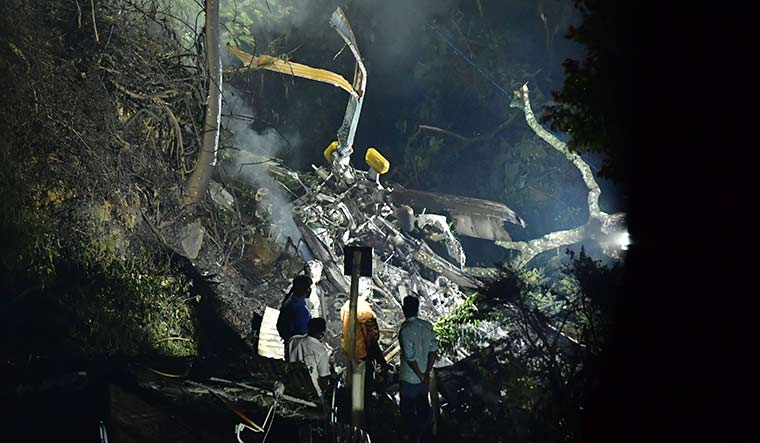An inquiry into the military helicopter crash, which killed India's first Chief of Defence Staff and 13 others, has claimed the bad weather and a judgement error on the part of the aircrew as primary reasons for the fatal crash.
A tri-service inquiry headed by Air Marshal Manvendra Singh—the senior-most helicopter pilot in the Indian Air Force—submitted a detailed presentation to Defence Minister Rajnath Singh today. In the hour-long presentation, the IAF briefed the minister about its findings along with recommendations for a VVIP flying in a chopper.
Wing Commander Prithvi Singh Chauhan was the pilot of the crashed Indian Air Force Mi-17V5 helicopter. The probe panel, after analysing the black box, established that the chopper went down in bad weather without sending any distress call. The CVR records all conversations in the cockpit including commotion or desperation in the cockpit and contains all conversations between the two pilots, pilots and the air traffic controllers.
It was also found that the chopper was flying at a low altitude and hit a cliff while negotiating the heavy clouds. The entire crew was experienced and belonged to the master green category—which means they are well-trained to land or take off even in low visibility conditions.
ALSO READ
- South Korea plane crash: Jeju Air CEO vows to ‘repair trust’ as families wait for victims’ remains
- Did concrete barrier lead to Jeju Air disaster? Black box decoding to take a month; Boeing 737-800 safety under scrutiny
- Azerbaijan plane crash: Russia vows to punish those responsible for the tragic incident
A defence source claimed that it was a case of a controlled flight into terrain (CFIT), which means an aircraft crashes into the ground due to disorientation of the crew and not a technical glitch. Generally, it is believed that CFIT is among the most common reasons globally for air crashes in bad weather, especially in mountainous regions.
“CFIT means the helicopter was airworthy and the pilot was not at fault. So, you can not entirely blame the pilot. The crash happened while descending amid bad weather,” said a defence official.
The Mi-17V5 helicopter belonged to the Sulur-based 109 Helicopter Unit. General Bipin Rawat was on a scheduled visit to Defence Services Staff College, Wellington, to interact with the student officers. The helicopter took off from Sulur Air Base at 11.48am on December 8 and was expected to land at Wellington by 12.15pm. Air Traffic Control at Sulur Air Base lost contact with the helicopter at approximately 12.08pm.
Subsequently, a few locals spotted a fire in the forest near Coonoor and rushed to the spot, where they observed the wreckage of a military helicopter engulfed in flames.
The IAF operates around 130 Mi-17V5 helicopters that were purchased and inducted between 2008 and 2018. It is part of the Air Force's VVIP fleet, in which the president, prime minister and other dignitaries usually fly for a short distance.
The Mi-17 V5's glass cockpit features cutting-edge avionics including four multi-function displays (MFDs), night-vision equipment, onboard weather radar and an autopilot system. The improved cockpit lessens the workload of pilots.





